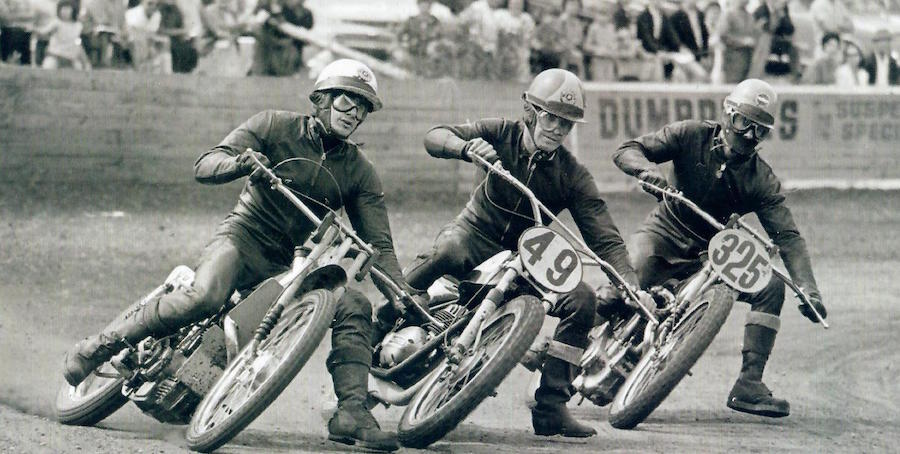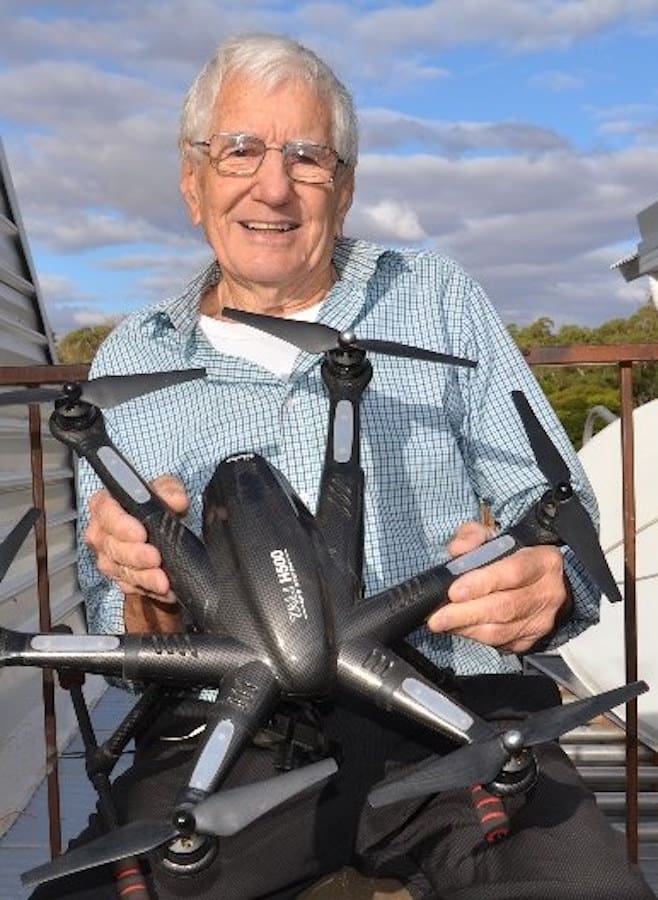While Charlie Edwards serving his apprenticeship at SJ Motorcycles in Dandenong, Edwards became equally captivated by motorcycles and, on obtaining his racing licence, used his model-aeroplane experience to convert his BSA Bantam ignition from a spark plug to a glow plug, thus preventing the motor from drawing water into the electrics. “After that I never snuffed the motor in the creeks which proved a great competitive advantage,” recalls Edwards.
A posting to Amberley Air Base to fulfil his National Service obligations was fortuitous and shortly after his discharge, Edwards was hired as pilot to a wealthy property owner. With time on his hands between his hours in the Cessna 172 and racing his Bantam for the West Wyalong MCC, Edwards developed a low-profile carburettor from melted down scrap aluminium. Next followed a five-speed gearbox, configured by coupling two standard gearsets; the second being mounted upside down. The Bantam also used Edwards’ handmade conrod, head and barrel but, at that time, nothing could match the pace of the Bultacos.

Bert Flood, the Australian Bultaco importer and top-line racer was already developing additional transfer ports for the successful Spanish marque and it wouldn’t be long before Edwards and Flood were collaborating to great success.
“Mr Bultaco himself visited Australia and was most impressed” Edwards said. “Bultaco were very appreciative of our racing success by perfecting the ports they later used in their own motors.”
But Edwards never ceased experimenting on his growing stable of two-strokes and improving his unique variable resonator exhaust, which increased torque at low revs – but tended to crack the pistons around the gudgeon pin.
“I wrote to Mahle Pistons in Germany, included a blueprint, and suggested they reinforce this area,” he said. Mahle replied stating they’d had no complaints, so Edwards cast his own pistons with great success. Within a year Mahle made the same modification.
Meantime, Edwards continued racing. His first Australian Short Circuit Championship came in 1968 when he won the 125cc class on his Bultaco. Several more followed, the last in 1974. These National Short Circuit titles were supplemented by innumerable State Titles including Long Track, Grass Track and Scrambles, though Edwards can count the costs.
“I had 24 fractures during my racing career; broken ribs, chipped spine, broken legs and an arm,” he laughed. “But I’m happy to say all the wire screws and plates have since been removed.”

Complications from minor surgery ended Edwards’ riding career shortly after he’d won his umpteenth Morgan Mile in 1975. But his racing career was about to head overseas.
Somewhere along the way, Edwards had engineered a Yamaha 350cc TR3 two-stroke racing engine into an Elstar dirt-track chassis which, in the absence of his usual mount, visiting English star Nigel Boocock borrowed to contest the Big Track meet at Bendigo. Nigel found the bike “a bit slow,” however after Edwards put the TR3 in third gear and Nigel had destroyed three rear tyres, they agreed it was the perfect machine to contest the World Long Track Championship. Yet, after Nigel demonstrated the bike at Coventry Speedway, the Germans banned the creation as too dangerous and Edwards returned home.
In recognition for his services to motorcycling, Edwards was awarded the Australian Sports Medal in 2000, and, after a successful foray into video production, returned to his very first love – model aircraft.
“I’ve built several six-engine drones for photography,” revealed Edwards. “And I hope to use them for gold prospecting as the on-board camera has real-time feedback.” Lasseter’s Reef awaits!
By Peter Whitaker












